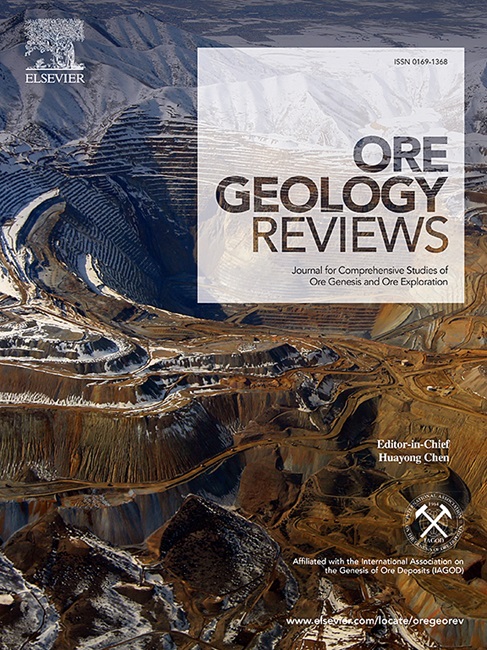Petrogenesis and Sc mineralization potential of the early Silurian Halaguole Alaskan-type complex in the East Kunlun orogenic belt
IF 3.2
2区 地球科学
Q1 GEOLOGY
引用次数: 0
Abstract
The Alaskan-type complexes are known for their unique annular lithologic zoning structure and are products of an island arc environment. The Halaguole mafic–ultramafic intrusions in the Kunlun orogenic belt, as reported in this study, exhibit characteristics of an Alaskan-type complex. The complex is composed of peridotite, pyroxenite, and gabbro, with well-defined annular lithological zoning from the core to the margin. The Halaguole mafic–ultramafic intrusions were formed during the Early Silurian period, specifically ranging from 437 Ma to 440 Ma according to Zircon LA-ICP-MS U-Pb dating results. They are enriched in large ion lithophile elements (LILE) and depleted in high field strength elements (HFSE), revealing positive europium (Eu) anomalies and negative niobium (Nb) anomalies. All of these characteristics indicate that they are products of an island arc environment. Based on analysis of zircon’s εHf(t) value (0.25 to 5.14) and model age (TDM1) (842.19 to 1034.61 Ma), it can be deduced that the intrusions originated from an enriched mantle source. The dominant mineral compositions within the Halaguole intrusions include olivine, clinopyroxene, amphibole, biotite, and spinel. With the absence of orthopyroxene, the compositions of these minerals are similar to Alaskan-type complexes. The contents of olvine, biotite, and spinel suggest that the parental melt of these intrusions is an aqueous basaltic magma with island arc properties. The Halaguole mafic–ultramafic intrusions likely formed through partial melting of the mantle wedge metasomatized by fluids from the subduction zone. This process was accomplished by fractional crystallization of magma. Combining the findings of previous research with the evidence presented in this study, it can be deduced that the closure of the Proto-Tethys Ocean occurred during the Early Silurian. Furthermore, it is evident that the Wanbaogou basaltic plateau in the Southern Kunlun Belt (SKB) underwent bidirectional subduction in a north–south direction. Notably, the samples from pyroxene peridotite and gabbro exhibit a significant concentration of Sc, ranging from 41.5 to 224.5 ppm, exceeding industrial grade levels and indicating excellent potential for Sc mineralization.

求助全文
约1分钟内获得全文
求助全文
来源期刊

Ore Geology Reviews
地学-地质学
CiteScore
6.50
自引率
27.30%
发文量
546
审稿时长
22.9 weeks
期刊介绍:
Ore Geology Reviews aims to familiarize all earth scientists with recent advances in a number of interconnected disciplines related to the study of, and search for, ore deposits. The reviews range from brief to longer contributions, but the journal preferentially publishes manuscripts that fill the niche between the commonly shorter journal articles and the comprehensive book coverages, and thus has a special appeal to many authors and readers.
 求助内容:
求助内容: 应助结果提醒方式:
应助结果提醒方式:


